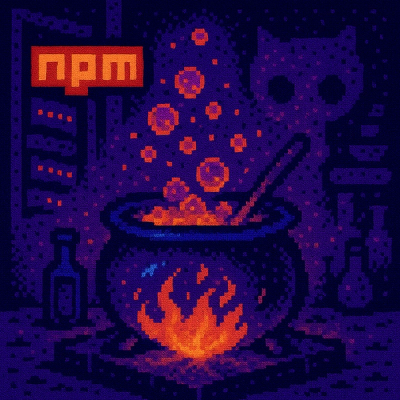
Research
/Security News
9 Malicious NuGet Packages Deliver Time-Delayed Destructive Payloads
Socket researchers discovered nine malicious NuGet packages that use time-delayed payloads to crash applications and corrupt industrial control systems.
Ansidocs is a command line tool designed to help collate and generate documentation for your Ansible project.
See the example_projects folder in this repo for examples of the READMEs generated by this tool.
After installing the pip package, a command line utility should be available in your virtual environment.
To see available options and the help message, simply run:
ansidocs
# or
ansidocs -h
To generate documentation for a project in directory /my/project:
ansidocs gen -d '/my/project'
Ansidocs comes with support for the common Ansible project layouts: roles and collections. You can modify how these projects are processed
or create your own project layout by modifying the configuration files.
By default, config files are located in your user directory at ~/.ansidocs. Files are placed here once the program is run, or by running
the config generation command:
ansidocs config
You can forcefully remove this directory and recreate it by using the refresh flag:
ansidocs config -r
Its possbile to customize or create your own project layout, as well as modify the existing templates used for README generation.
A project layout is a configuration entry that describes where different pieces of your project exist relative to the root directory.
Although the types of project parts are limitted to what the program supports, you can add, remove, or move the project parts.
To do this, modify the existing configuration file (by default at ~/.ansidocs/ansidocs.yml). In that file, there is a dictionary
called project_layouts.
Note: The meta file attribute is used to link a project layout to your project. So, no layouts should have the same meta file
value, and the meta file must exist in your project for the program to recognize its layout.
An example of the project layout struct can be found in your configuration file.
Each project layout has the option to define a custom README template and add, remove, or reformat data. The templates are found in your
configuration directory, (by default at ~/.ansidocs/templates). If the program finds a folder with the same name as your layout, it will
look in that directory for templates before falling back to the defaults directory.
When a project's README is rendered, it occurs in 4 stages:
If your project layout defines a docs attribute and that directory exists, ansidocs will look in that directory for certain files and include them in the README generation.
Some supported documents include:
usage.md - This file will be injected at the top of the Usage section in your README.md. The file should be pure markdown, there will be no templating or substitution done on this file.
description.md - This file will be injected at the top of the Description section in your README.md. The file should be pure markdown, there will be no templating or substitution done on this file.
defaults.yml - This file should contain descriptions for defaults defined in your project, if any. This file is YAML and should match the keys in your defaults/main.yml or corresponding defaults file. Values should be strings that are used as descriptions when compiling the defaults markdown table
FAQs
Generate and collate documentation for Ansible projects
We found that ansidocs demonstrated a healthy version release cadence and project activity because the last version was released less than a year ago. It has 1 open source maintainer collaborating on the project.
Did you know?

Socket for GitHub automatically highlights issues in each pull request and monitors the health of all your open source dependencies. Discover the contents of your packages and block harmful activity before you install or update your dependencies.

Research
/Security News
Socket researchers discovered nine malicious NuGet packages that use time-delayed payloads to crash applications and corrupt industrial control systems.

Security News
Socket CTO Ahmad Nassri discusses why supply chain attacks now target developer machines and what AI means for the future of enterprise security.

Security News
Learn the essential steps every developer should take to stay secure on npm and reduce exposure to supply chain attacks.